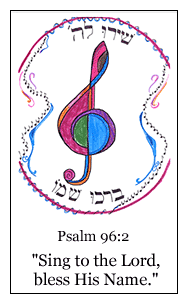
 |
 |
|
Having served as a cantor, composer, and choir leader for many years, and a professor of music theory and literature for thirty years, project director, Cantor Sholom Kalib, Ph.D., D. Mus., felt a keen sense of personal and professional responsibility to see to it that the tradition of Eastern European synagogue music was fully documented, recorded, and annotated for posterity. Originally begun as a research project some twenty-five years ago, this undertaking became his life's work and gradually evolved into the Jewish Music Heritage Project.
In 1989, a fellowship from the National Endowment for the Humanities enabled Kalib to research and lay much of the groundwork for what was ultimately to become the content of the introductory volume to a projected five-volume, 20 book comprehensive anthology entitled, The Musical Tradition of the Eastern European Synagogue. While the written work forms the basis for the documentation of this music, the Jewish Music Heritage Project seeks to bring the magisterial and exhilarating sounds of this music to life, and to recapture them for posterity in a way that serves the needs of the modern society of the 21st century. Thus, the Jewish Music Heritage Project includes several other components needed to ensure that these goals are realized.
|
Copyright Jewish Music Heritage Project 2005
Home About JMHP Historic Background Project Development Our Mission Leadership FAQ The Choir The Director Support JMHP
Books CDs Wall
of Honor Events
/ Announcements Contact
Us Credits
 While the basic prayer modes (nusach, pl. nuschaot) of West Central European Jewry - the primary parent tradition of the Eastern European - has been documented, the Eastern European has not. In response to this situation, beginning in 1979, Kalib took a research tour across the U.S., Canada and Israel to meet with and record thoroughly knowledgeable and experienced native Eastern European cantors and lay baale t'fillah (prayer leaders). Some 130 tapes of hitherto largely unwritten music were subsequently transcribed into musical notation. This material, plus hundreds of other recordings and musical manuscripts, published and unpublished, which Kalib had collected over the years constituted the raw material from which he began to work.
While the basic prayer modes (nusach, pl. nuschaot) of West Central European Jewry - the primary parent tradition of the Eastern European - has been documented, the Eastern European has not. In response to this situation, beginning in 1979, Kalib took a research tour across the U.S., Canada and Israel to meet with and record thoroughly knowledgeable and experienced native Eastern European cantors and lay baale t'fillah (prayer leaders). Some 130 tapes of hitherto largely unwritten music were subsequently transcribed into musical notation. This material, plus hundreds of other recordings and musical manuscripts, published and unpublished, which Kalib had collected over the years constituted the raw material from which he began to work.